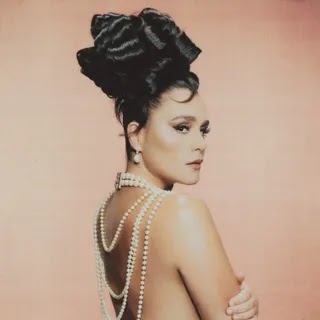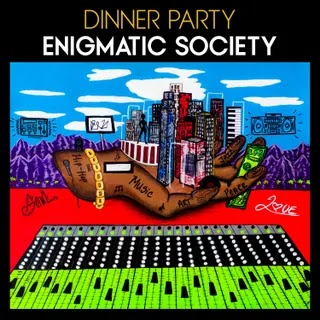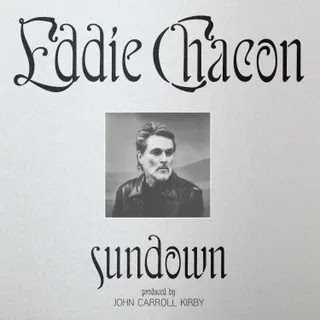With 63 previously unreleased tracks, this newly remastered version of Prince’s groundbreaking 1987 album is a trove of lost songs and dramatic lore, a jaw-dropping look into one of the most creatively fertile times in his career.
Sign o’ the Times is probably the most complete exhibition of Prince’s talent. Almost every style he’d attempted up to that point in his career is presented in its most clarified and uninhibited form. It’s also one of the leanest-seeming double albums of all time—not a note across its four sides registers as indulgent or out of place. But the very notion of “place” is a complicated one on Prince’s masterwork; the sessions that produced the record lasted over a full year and were intended for multiple unrealized projects and albums. The songs themselves sometimes hail from even further back in time, closer to the beginnings of Prince’s career, when he was still exploring the slender shadow-space between funk and new wave.
Which is why it might be helpful to think of the original 1987 release of Sign o’ the Times as more of a network than an album—a small reservoir of music filled from many disparate sources. No wonder listening to it has always sort of felt like walking through the rooms of a house inside of Prince’s dream. And with the release of the new eight-disc, Super Deluxe edition of Sign o’ the Times, one can finally zoom out and glimpse the totality of its scale. Entire new floors and wings have been unlocked in the structure, revealing songs removed from the album’s original sequence, as well as tracks he intended for his forebears Joni Mitchell and Miles Davis, free-flowing studio jams, and the tentative beginnings of a stage musical about roving gangs of musicians.
It’s an overwhelming amount of material. (There’s even a song called “Love and Sex” on the new set that’s completely distinct from the other Prince song called “Love and Sex” on the 2017 Purple Rain reissue.) Throughout 1986 and leading up to the release of Sign o’ the Times, concepts bloomed in Prince’s vision, only to shrink away when his attention drifted elsewhere. This didn’t mean he was unfocused. His burgeoning creative relationship with Revolution bandmates Wendy Melvoin and Lisa Coleman produced complete gardens of songs, such that he could hardly keep them confined to one album; he sequenced both single and double-LP versions of a project called Dream Factory, a living archive of all the songs they made together that didn’t work on more focused album projects like the just-released Parade.
The Dream Factory songs unearthed from the vault are staggering. Wendy and Lisa added such lightness and complexity to Prince’s music, they made the ground disappear beneath its heels. “All of My Dreams” exemplifies this; from its first choral blossomings to its sophistipop chorus to Prince’s pitched-down vocal moving through the song like a lowered cloud; we hear him recount a sex dream where, for the umpteenth time in his work, the sensual grows indistinguishable from the surreal. It’s the platonic ideal of a lost Revolution track, a beguiling long-form experiment that is also undeniably pop, the strange, unbound invention of three true genre agnostics.
Also slated for Dream Factory was “The Ballad of Dorothy Parker,” the first song Prince recorded in his freshly-built home studio just a few hours after waking from a dream. A flaw in the installation of the studio console made the drum machine sound watery and distant, like a thumping beneath the hull of a ship, and the synths echoed like they were being bounced off sheet metal. Engineer Susan Rogers panicked, but Prince continued recording, impatient to get the idea down. The song ended up sounding half-asleep as he was, a trip through the unconscious world before waking. After finishing it, he asked one of the horn players in his band, Eric Leeds, to paste a horn arrangement on top of it. So many of Sign o’ the Times pleasures lie in Prince’s incorporation of horns—they blink like new sequins in the fabric of his music—but it’s mostly uncanny to hear the blear of “Dorothy Parker” suddenly studded with in-focus saxophone harmonies.
“Power Fantastic,” recorded live with the Revolution playing in Prince’s house, opens with Prince giving studio direction to the rest of the band from the control room. He’s in a relaxed, dreamy-sounding mood. “Just trip,” he says, “There are no mistakes this track. This is the fun track.” The instruments drift into each other in slow motion, gradually building to a free interplay between horns and piano and brushed drums that’s like waves crashing and foaming on rocks, before receding back into silence. Out of that quiet, Lisa plays the melancholy piano figure that begins the real song, the bones of which she wrote with Wendy, and Prince starts singing his vocal from the corner of the control room, only pausing to guide the band through the changes by saying “bridge” or “chorus,” the musicians pouring into each new part like water. It’s a gorgeous document of the chemistry the Revolution had at their peak, even as they were beginning to fall apart.
“Strange Relationship,” among Prince’s cruelest songs, had been around since 1983, but he decided to rework it with Wendy and Lisa for inclusion in Dream Factory. Their contributions to the original performance make it almost psychedelically deep. Sampled sitar buzzes swirl around the groove and make its borders fuzzier; Wendy and Lisa’s voices appear like hazy auras around Prince’s, which sounds wounded and grave, seemingly adrift between the song’s vectors of resentment and desire. When he sings “Baby I just can’t stand to see you happy/but more than that I hate to see you sad,” he sounds genuinely tortured about it. It makes for a more desperate and sad song than what appeared on the record; when Prince fired Wendy and Lisa from his band, he scrubbed most of their presence from the recording, and re-recorded his vocal, presumably so it would match the new lightness of the instrumentation.
With Wendy and Lisa gone, and the Revolution and Dream Factory both functionally over, Prince, tired of his own voice, fed it into a sampler and adjusted its pitch until it twisted itself into a high, androgynous peal. He named the voice Camille, credited his vocals to her, and planned to release a new solo album of pitch-shifted funk jams under the name. It was the apotheosis of all the gender play he’d worked into his visual appearance and his ambiguous and boundless sexuality on record, except Prince had erased himself from the picture: All that was left was the voice, this unknowable shriek exploding through the speaker. Originally designated as the opener for the Camille album, it’s remarkable to hear “Rebirth of the Flesh” in good quality (one of the distinct pleasures of these vault excavations is no longer having to decipher some of these songs through blown-out distortion or puddles of tape hiss). It’s like a lost statement of purpose for Sign o’ the Times, and it makes sense why Prince, after abandoning the Camille project, would retain it as the opening track for a triple-album concept that absorbed both Camille and Dream Factory into it, the different concepts now consuming each other like successively bigger fish. He called this new configuration Crystal Ball, and it contained almost every song that would end up on Sign O’ The Times, plus a few others.
What’s frustrating is that it’s impossible to rebuild Crystal Ball or Dream Factory just from the materials included in this box set. This is partly owed to the fact that Prince released several Crystal Ball songs when he was alive, on the confusingly-titled archival release, 1998’s Crystal Ball. But the segues and edits Prince had planned for each record are presumably still unavailable, and the albums themselves remain inaudible abstractions, something beloved in a form that’s just different enough to seem mysteriously new. When Warner Bros. asked Prince to edit Crystal Ball down into two LPs, it became the Sign o’ the Times we recognize today, and it’s a stronger album for that, even if it’s a compromised artistic vision.
As Prince finalized versions of each of these projects, more and more recording occurred around them; Prince practically seemed to live in the studio during this period. Tracks like “Adonis and Bathsheba” emerged, a fascinating and strange ballad poured out at a diagonal angle, and one of several vault tracks from this era that ends with a firework of a guitar solo. There’s a brief suggestion of Prince flirting with gospel on rave-ups like “When the Dawn of the Morning Comes” and “Walkin’ in Glory,” the grooves of which bring to mind an image of Prince strutting on high-heels through a congregation.
The most legendary, whispered-about lost song here is “Wally,” which Prince wrote for Wally Stafford, one of his bodyguards and dancers, who comforted Prince after his breakup with fiancée Susannah Melvoin. Prince reportedly thought the song was too personal to keep and asked Susan Rogers to delete the original track, despite her protests. He recorded it in a new arrangement a few days later, but this recording too went unheard. All of the sudden, here it is. It’s a Prince piano ballad that stops and starts like a conversation, pianos and horns lurching back and forth like their attention’s drifting toward each speaker, though we only hear one side: a playful question (“Wally/Where’d you get those glasses?/Those are the freakiest glasses I’ve ever seen”) that spirals out into Prince’s all-consuming loneliness without ever shedding the sense of humor that regulates their back-and-forth. Every other line is at least a joke or a confession; most of them are both. In the order of theatrically heartbroken Prince songs it feels posed somewhere between “Another Lonely Christmas” and “Purple Rain,” and there is yet another phenomenal guitar solo that coils and sparks through the final minutes of the track.
By the time Sign o’ the Times came out, Prince had replaced the Revolution with a band that responded to every flicker of his fingers. (They’re in great form in the Utrecht show and the New Year’s Eve performance at Paisley Park documented in this set.) He wasn’t a band member or a co-writer anymore. He was a conductor, a bandleader, like his hero James Brown. The music bent to his pressure, and the music was never quite the same. The grooves tightened up to the point where they could feel airless and mechanical, like pistons mindlessly hammering beneath a car hood. Even when the songs were good—and they often were—they started reacting to and absorbing popular sounds instead of dictating them. Sign o’ the Times is the strange, cracked compass that took him to this place, containing both everything he once had (his band, his relationship with Susannah Melvoin) and its dissolution. The path forked where it did. The album cover depicts him as a blur walking away from an unmanned drumset and an empty piano bench on a stage strewn with flowers. He wouldn’t look back, if he even could.











%20Music%20Album%20Reviews.webp)




0 comments:
Post a Comment